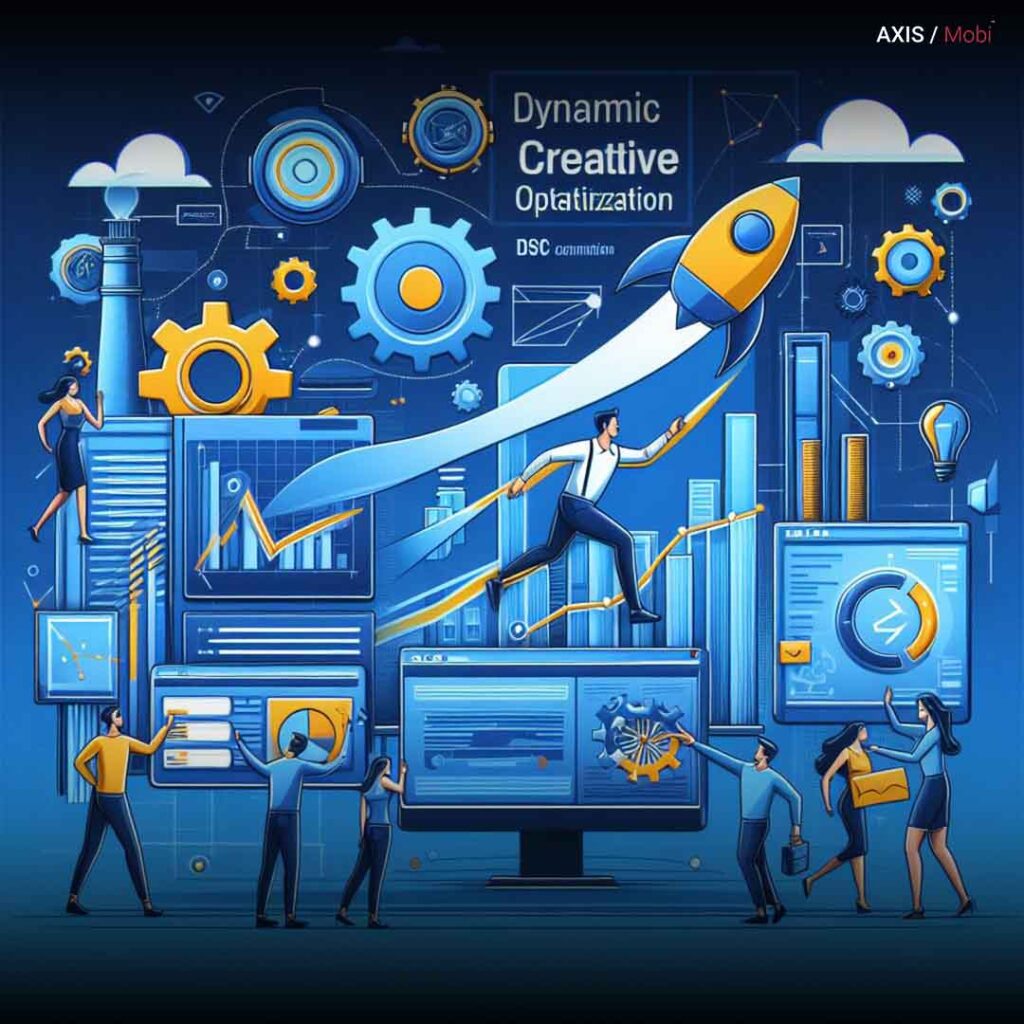In the ever-evolving world of digital advertising, Demand Side Platform (DSP) companies play a crucial role in helping advertisers reach their target audiences effectively and efficiently. These companies operate behind the scenes, using sophisticated algorithms, real-time data analysis, and advanced technologies to optimize ad performance. In this comprehensive guide, we will take a deep dive into the inner workings of DSP companies and explore how they drive success in the world of programmatic advertising.
Understanding DSP Companies

Before we delve into the optimization strategies employed by DSP companies, let’s establish a clear understanding of what these companies do and how they operate.
What Are DSP Companies?
DSP companies, or Demand Side Platform companies, are technology providers that offer a centralized platform for advertisers and agencies to purchase digital ad inventory across various online channels. Their primary goal is to help advertisers efficiently reach their target audiences and achieve their advertising objectives.
DSP companies facilitate real-time bidding (RTB) for ad impressions, allowing advertisers to bid on and purchase ad space in milliseconds. These companies leverage data-driven insights, machine learning, and algorithms to make informed bidding decisions and optimize ad campaigns for maximum performance.
Key Functions of DSP Companies
DSP companies perform several key functions to ensure the success of digital advertising campaigns:
- Audience Targeting: DSPs provide extensive targeting options, allowing advertisers to define and reach specific audience segments based on demographics, behavior, interests, and more.
- Real-Time Bidding (RTB): DSPs participate in real-time auctions where ad impressions are bought and sold, enabling advertisers to bid on the most relevant placements.
- Data Analysis: DSP companies continually analyze campaign data to identify trends, patterns, and opportunities for optimization.
- Ad Inventory Management: DSPs offer access to a vast inventory of ad placements across websites, apps, and platforms, ensuring advertisers have diverse options for campaign placement.
- Campaign Optimization: Using machine learning and algorithms, DSP companies optimize bidding strategies, ad placements, and creative assets to achieve the best possible return on investment (ROI) for advertisers.
Now that we have a solid understanding of DSP companies, let’s explore how they optimize ad performance.
Strategies for Ad Performance Optimization by DSP Companies
DSP companies employ a range of strategies and techniques to optimize ad performance, ensuring that advertisers get the most out of their digital advertising campaigns. Here are some key optimization strategies:
1. Audience Segmentation

One of the core optimization strategies used by DSP companies is audience segmentation. They leverage vast amounts of data to divide target audiences into highly specific segments based on demographics, behavior, interests, and more. By creating well-defined audience segments, DSPs can deliver tailored ad content to different user groups, increasing the chances of engagement and conversion.
2. Real-Time Bidding (RTB)

RTB is a fundamental aspect of DSP advertising. DSP companies participate in real-time auctions for ad impressions, where they bid on behalf of advertisers. The key to effective RTB optimization lies in making intelligent bidding decisions in milliseconds. DSPs use algorithms and historical data to determine the optimal bid for each impression, ensuring efficient ad spend allocation.
3. Dynamic Creative Optimization (DCO)

Dynamic Creative Optimization (DCO) is a technique used by DSP companies to personalize ad creatives in real-time. By analyzing user data and behavior, DCO automatically customizes ad content, such as images, text, and calls to action, to match the preferences and interests of individual users. This level of personalization enhances ad relevance and drives higher engagement rates.
4. Ad Inventory Management

DSP companies carefully manage ad inventory to ensure that ads are placed in the most relevant and effective environments. They consider factors like website quality, content relevance, and user engagement to determine where ads should appear. This approach maximizes the chances of capturing users’ attention and generating positive responses.
5. Data-Driven Decision-Making

Data analysis is at the heart of ad performance optimization by DSP companies. They continuously monitor campaign data, tracking metrics like impressions, clicks, conversions, and more. By analyzing this data, DSPs identify trends, patterns, and areas for improvement. This data-driven approach enables them to refine targeting, bidding, and creative strategies to enhance campaign performance.
6. Budget Allocation
Efficient budget allocation is a critical aspect of ad optimization. DSP companies help advertisers set and manage their budgets effectively. They allocate budgets to different segments and ad placements based on performance data, ensuring that resources are directed to areas that deliver the best results.
The Role of Machine Learning
Machine learning plays a significant role in ad performance optimization by DSP companies. These algorithms analyze vast datasets and learn from past campaign performance to make real-time decisions. Here’s how machine learning contributes to optimization:
- Predictive Bidding: Machine learning algorithms predict the likelihood of a user converting and adjust bidding strategies accordingly to secure high-value impressions.
- Ad Content Personalization: Machine learning analyzes user behavior and preferences to dynamically tailor ad creatives, ensuring relevance.
- Campaign Pacing: Algorithms monitor and control the delivery of ads to ensure even pacing and prevent overspending early in a campaign.
- Fraud Detection: Machine learning algorithms identify and mitigate ad fraud, ensuring that ad spend is not wasted on fraudulent impressions or clicks.
Case Studies: Success Stories of DSP Company Optimization
Let’s explore two case studies to see how DSP company optimization strategies have led to successful ad campaigns:
Case Study 1: Retailer’s Conversion Boost
A fashion retailer partnered with a DSP company to drive online sales. The DSP company implemented advanced audience segmentation, using machine learning to identify high-potential customer segments. By delivering personalized ads to these segments and optimizing real-time bidding, the campaign achieved a 40% increase in conversions compared to previous campaigns.
Case Study 2: Travel Brand’s Engagement Surge
A travel brand sought to increase user engagement with its website. The DSP company leveraged dynamic creative optimization (DCO) to deliver tailored ad creatives based on user preferences and travel destinations. As a result, the campaign saw a 30% increase in click-through rates (CTR) and a 25% increase in website engagement.
These case studies highlight the impactful role of DSP company optimization in achieving advertisers’ objectives.
Conclusion
DSP companies are the driving force behind the scenes of successful digital advertising campaigns. Their ability to optimize ad performance through audience segmentation, real-time bidding, dynamic creative optimization, and data-driven decision-making sets the stage for advertisers to achieve their goals efficiently and effectively. As machine learning continues to advance and data becomes more abundant, the role of DSP companies in programmatic advertising will only become more critical. By staying informed about industry trends and embracing the strategies employed by DSP companies, advertisers can unlock the full potential of their digital advertising efforts and drive success in the competitive landscape of online advertising.
Frequently Asked Questions (FAQs)
-
What do DSP companies do in digital advertising?
DSP companies provide a centralized platform for advertisers to purchase digital ad space, optimizing ad performance through real-time bidding, data analysis, and advanced technologies.
-
What key functions do DSP companies perform?
DSP companies facilitate audience targeting, real-time bidding, data analysis, ad inventory management, and campaign optimization to ensure effective digital advertising.
-
How do DSP companies optimize ad performance?
DSP companies employ strategies like audience segmentation, real-time bidding, dynamic creative optimization, ad inventory management, data-driven decision-making, and efficient budget allocation.
-
What is the role of machine learning in DSP company optimization?
Machine learning contributes to predictive bidding, ad content personalization, campaign pacing, and fraud detection, enhancing the efficiency and effectiveness of DSP company optimization.
-
Can you provide examples of successful DSP company optimizations?
Case studies show how DSP companies boosted conversions for a retailer through advanced audience segmentation and increased engagement for a travel brand using dynamic creative optimization.




